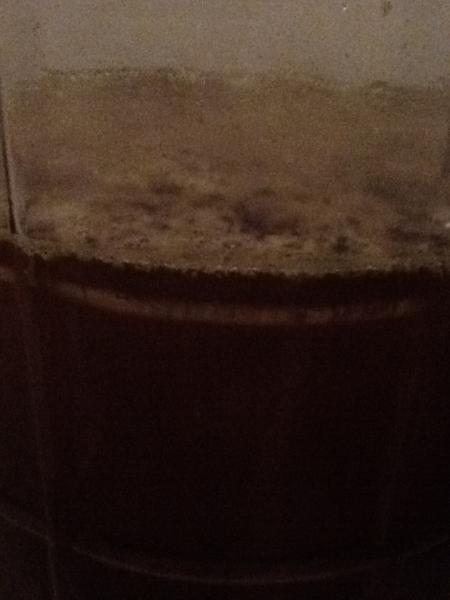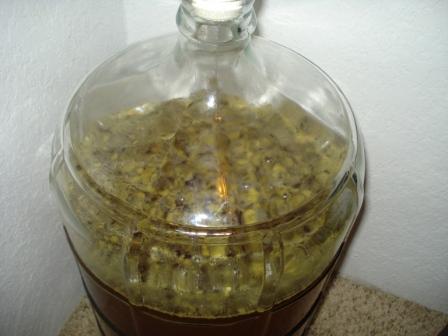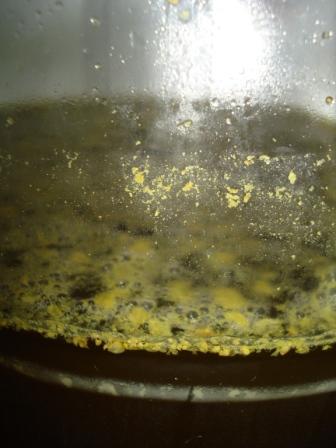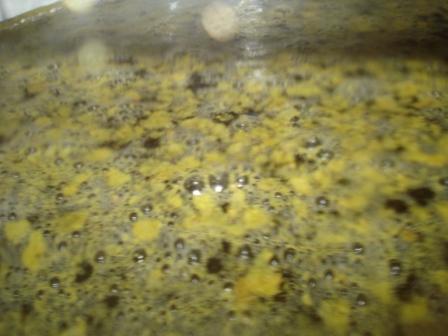tanderson36
Member
So I brewed a partial mash Rye IPA just over 3 weeks ago. At one week, after initial fermentation slowed in my plastic bucket, I racked it over to a glass carboy and added several ounces of various pelletized hops straight into the carboy for dry hopping. After two weeks, and a few swirls of the carboy every other day, about 90% of the hops had sunk to the bottom and everything was looking great. Temperature was around 67-68 and it was being stored in a dark, dry closet. Then I went away for the weekend and came back to find a funky mold like substance growing on the top of my beer. I was planning on racking it over to a keg in the next few days, but now I'm wondering if I've lost my first batch, or if it can be saved. I have not tasted it yet, but it still smells ok. Reading previous posts, it sounds like I should rack from beneath the mold and just hope that its tastes OK after carbonation.
Below are some photos I took last night. It's hard to see through the glass as there is a film around the inside layer. I took the cap off for 30 seconds to take the overhead shot to get a better angle of the mold.
Please let me know what I should do. Thanks.




Below are some photos I took last night. It's hard to see through the glass as there is a film around the inside layer. I took the cap off for 30 seconds to take the overhead shot to get a better angle of the mold.
Please let me know what I should do. Thanks.









